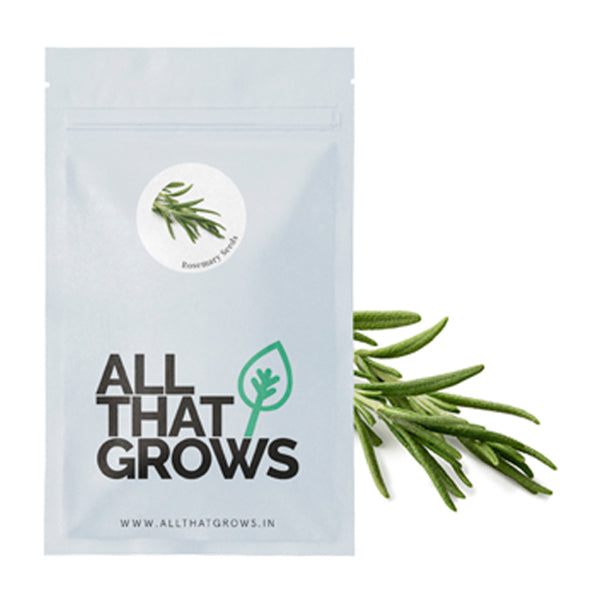- Details
- How to sow
- Reviews
Rosemary, a native of the Mediterranean region, is an aromatic perennial herb with pungent camphor-like scent. Much like the salvia family herbs, Rosemary shrub can reach up to four feet in height in ideal growing conditions. The evergreen, linear needle-like leaves of the herb grow to be about 1 inch long while the blooms on maturity are of pale blue or white colour. It’s best to harvest rosemary prior to flowering when the flavours are stronger. Besides being the culinary favourite of chef’s around the world, Rosemary also has significant medicinal value including anti-inflammatory and antibacterial properties. You can add fresh rosemary sprigs to your recipes to add to the flavours and aroma. Rosemary oil is also quite popular in the culinary and cosmetic industry. Fresh rosemary can be stored in a damp paper towel while the dried herb will keep in an airtight container for 5-6 months.
Planting instructions
Sow rosemary seeds ¼ inch deep in well-drained soil and cover lightly with soil since the seeds require light for germination. Rosemary seeds are relatively slow to germinate and may take up to 30 to 50 days to germinate. Be patient with the herb. The soil must be kept moist at a temperature of 20 to 22℃ for seeds to germinate.
Growing Requirements
pests
Rosemary plants are prone to powdery mildew since they can not tolerate high humidity. This can weaken the plant considerably. Maintaining the right soil moisture is very important to grow a healthy plant. In addition to this aphids and spider mites can attack the plant. Regular plant check up and neem spray should be able to take care of this.
soil
Rosemary grows best in rocky, sandy and well-draining soil with pH ranging from 6.0 to 7.0
spot
Plant in place that receives 6-8 hours of full sunlight throughout the day since Rosemary plants do not like wet roots.
temperature
Ideal soil temperature for germination of rosemary seeds should range between 20 to 22℃
watering
Soggy soil, especially in containers, can be detrimental to the rosemary plant and cause root rot. Be careful of overwatering the plant and only water once the soil is completely dry.
how to harvest
Rosemary plants must be harvested from the branches and not from the stems. Once the needle-like spikes are 1 to 2 inch long, you can start harvesting them. Rosemary can also be dried and used but freezing might cause it to lose some of it’s flavour. Rosemary pairs well with other herbs and can be used to flavour a variety of recipes and breads etc.

The productiveness of any seed we sell is subject to your local climatic conditions*, the sowing method you adopt, and your commitment to the planting process. We give no warranty, expressed or implied, and are in no way responsible for the produce.
Please note that all our seasonal recommendations/ sowing information is as per the local climatic conditions. *For more information on the optimum conditions required for growing seeds in your region, please contact us at, hello@allthatgrows.in or Whatsapp us at, +91 8544865077
Questions & Answers
Have a Question?
Be the first to ask a question about this.


















